People of Antediluvian: Testudo
Well Met Travelers,
Welcome to another worldbuilding session.
Last Time I did a post like this, I covered Humans, The most adaptable of races in the world. This week, I will be covering one of the most unique races in my world, the Testudo, a race of turtle people with a taste of the Orient.
Testudo are a varied and diverse people with a long and ancient tradition. These creatures appear to be bipedal turtles which usually stand around six feet tall. Their skin/scale tones range through green, gray, brown, and all other colors that range between. Their eye color often depends on the subrace, but brown and amber eyes are common among all of Testudo.
All Testudo live between 300-400 years and speak a language known as Wugui which has 3 regional dialects.
The Testudo history is integral to understanding their culture and the subraces:
The Testudo have walked the world for years untold. When Antediluvian was young, their race was beset by near endless war and violence, both internal and external. This war gave rise to an elite group of warriors who became known as the Snapjaw. These Snapjaw would make a massive empire that spanned the entirety of Testudo lands. One day, a young Testudo witnessed an attack on his village by the local Snapjaw warlord.
This Testudo, named Monaho, wanted revenge, but he was not a warrior, and the mana siphon that the Snapjaw had constructed made it impossible for anyone other than the Snapjaw to cast spells. Monaho set out in search of some way of learning to fight back against the Snapjaw. As he journeyed into the world, he stumbled upon a grove of cherry trees that was sacred to six nature spirits. These spirits began to train him in the Monastic arts, and as he trained, Monaho released his negative emotions, reaching a state of Zen. This allowed Monaho to tap into Ki, the energy of the soul.
With these newfound skills, Monaho taught these monastic skills to other Testudo. With these other Testudo monks, Monaho was able to lead an army to topple the Snapjaw empire. After the fall of the Empire, these Testudo started to create a civilization of their own, a society dedicated to peace and discipline. These Testudo became known as Pacistoi, and while peace is important to them, they will fight to protect their way of life.
After the Death of Monaho, a rift developed among the Pacistoi, for many of his disciples decided to stick with Monaho's teaching. Others saw that the war was over, so they gathered under the Teachings of Sago, a Testudo who felt that Absolute Non-violence was the best method. These Non-violent Testudo forsook the Monastic arts and accepted the path of the Druids. These Testudo, who became known as Pacisma. They wander through Pacistoi lands relying on the Pacistoi for support because they cannot build or farm because both harm the land and harm is a violent act.
Eventually, the Snapjaw resurged and the Pacisto held them back, but now the island of the Testudo is divided in Half by a Great Wall that was constructed by the Pacistoi to hold back the tides of war, but that has not stopped the Snapjaw from trying to conquer the Island.
Subraces:
Snapjaw
The culture of the Snapjaw is a culture of warfare. From an early age, all Snapjaw receive basic weapons and military strategic training. This makes the Snapjaw a people of incredible military might, as each individual is as well trained as another nation's common soldier. To enhance their combat potential, the Snapjaw are a more industrial society, focusing on the creation of arms, armor, and siege weapons. This has lead to the creation of special weapons such as the Katana and other arms that would be considered exotic by most cultures. To heighten the aesthetic of war, Many Snapjaw will bolt iron to their shells to give them enhanced natural armor.
The Snapjaw government is an Imperial System with power delegated to regional warlords. At the top of their political System is the Great Steel Emperor Fang Chun Snapjaw III. Below him are many regional warlords who carry out his rules and orders in the many provinces. Fang Chun's power is enforced by the near endless might of the Snapjaw legion. Recently, this might has been multiplied by magic and the Argilo Legion.
The magical Affinity of the Snapjaw is arcane and divine, for the Snapjaw's military nature and the industry means that the spirits of nature will not heed their call. Arcane magic is heavily controlled by the Imperial Academy of Sorcery where only a few dozen Snapjaw are accepted to practice magic each year. Divine magic Among the Snapjaw comes from Deldur the god of Warfare. Weaving these two forms of magic together, the Snapjaw empire has been able to create an army of Terracotta Golems to fight in the name of the Empire; this legion is called the Argilo Legion.
Snapjaws' unique appearance is the mounting of Iron and Steel plating on the body. The natural bloodlust among Snapjaw has led to orange and red eyes being common among them.
Snapjaw Marriage is purely a legal arrangement, unlike many of the other cultures of Antediluvian. These marriages are legal documents signed by the couple and an imperial administrator in the name of the local warlord. There is no major ceremony in their culture. Most of the time, marriages are arranged to create alliances between major families of the empire.
Funeral Customs among the Snapjaw are quite interesting because of the military nature of the culture. If the deceased is a member of the Military, then the government will pay for a full military funeral for the deceased, but if the deceased was not a member of the military, they are lucky to get even a small private ceremony from their own family.
Pacistoi
The culture of the Pacistoi is a culture of peace, calm, and discipline. While not all Pacistoi are monks, most are. They spend their time training in the Monastic arts and creating wonderful works of art and culture. It is a belief in their society that each individual should leave the world a better place than when they entered it, so they produce these arts in an effort to make the world better. They live simple lives, and they have few negative emotions.
The government structure of the Pacistoi is interesting, for there is no one leader. The Pacistoi believe that they are led by the Nature Spirits who taught Monaho the Monastic arts. These Spirits guide the physical leader of the Pacistoi, the Grand Master. The Grand Master is a monk who has mastered all 6 of the Monastic Arts: Rat, Elephant, Fox, Pig, Dragon, and Turtle. Through his mastery of the Monastic Arts, the Grand Master has reached absolute enlightenment, which according to the Pacistoi gives him or her the ability to rule them justly. Below the Grand Master are the 5 Masters; each of these Masters is the expert of one of the Lesser Monastic Arts: Rat, Elephant, Fox, Pig, and Dragon. They help the Grand Master carry out the duties of state. When a Grand Master feels his time is coming, He will select a master he thinks is most ready to replace him. This Anointed must learn the styles of each of their contemporaries before learning the revered Turtle Style from the Grand Master. The Grand Master then allows himself to be taken on to the next life.
The Magical Affinity of the Pacistoi is a combination of Ki and Natural Magic. While Ki is not magic as most scholars would call it, it certainly creates extraordinary and supernatural effects. Ki is tapping into the power of one's own soul, this is how monks can magically empower their bodies and control even the most violent emotions. Ki also allows monks to slow their aging, and Grand Masters can even hold death at bay until they are ready to let a new Grand Master take over. Natural Magic comes from the fact that Pacistoi are more nature-friendly than the Snapjaw, so the spirits of nature are willing to cooperate with them.
The unique aspects of the Pacistoi appearance are the presence of blue and orange eyes. Blue comes from the Ki which has helped to eliminate the bloodlust of the Snapjaw. Orange Eyes persist despite this.
The Marriage customs of the Pacistoi involves the Monastic Tradition of their people. The marriage ritual occurs at the Nearest Monastery. In the Monastery, the ritual occurs in the shrine to the Ki Spirits, as those Nature spirits that taught Monaho). This Ritual takes place in the Presence of a Monk and involves placing Love and honor as major Parts of the couple's lives while Discipline must be maintained.
Pacistoi have an interesting view on funerals. They say that funerals are for the living. Their argument is that life is just the beginning of something better, so there is no reason for the dead to need a sad send-off. They argue that because the dead move on to paradise and enlightenment beyond the bonds of their mortal shell that Funerals should be a happy time. The ceremony itself is the laying out of the body so that each Pacistoi that wishes to may say their goodbyes.
Pacisma
These are the last sub-race of the Testudo to develop chronologically. They find that Absolute non-violence is the way to reach enlightenment. They have forsaken the Monastic arts of their forefathers and taken up druidism and the path of nature. Druidism combined with the vestiges of Monasticism has allowed them to release nearly all emotions; they are mellow and passive creatures, refusing to fight even in their own defense. They have no lands to call their own, instead, they wander through the land of the Pacistoi and use the labor of the Pacistoi to sustain them. ( the Pacistoi do not mind because their labor produces excess and since they want to make the world better, they share) The Pacisma do not build or farm because they believe that either of these actions will harm nature and that is a violent act.
There is no government structure among the Pacisma because they are a People of Peace and Freedom. An Arch-Druid acts as a guiding compass for those Pacisma who feel inner conflict. Other than that, the Pacisma yield to the Pacistoi law and custom because they live within the lands of the Pacistoi.
Magical Affinity of the Pacisma is on the Natural and Divine path. Natural magic responds to the Pacisma just as much as to the elves who were born on the natural path. Their unwillingness to harm any part of nature has earned them the respect of the Nature Spirits. Divine connection comes from Jerrat, the God of Nature and the Patron god of Druidism. He supports the Pacisma because they champion his beliefs more than any other group.
The Unique Physical Aspect of the Pacisma is that they have blue, green, amber, and brown eyes. This is because they are free from any of the corruption of the Snapjaw. Their eyes reveal their pure and unbridled connection to the natural world.
The marriage rituals of the Pacisma are odd. Pacisma may marry whomever they love, and a druid will bind them. However, Pacisma usually have very open marriages allowing them to have multiple lovers and spouses.
The Funerary Rituals of the Pacisma are identical to the rituals of the Pacistoi. The one difference among their beliefs is that the Pacisma use druidic magics to grow extensive amounts of flowers around the deceased to ease the passage into the next life.
I believe that is all for this time.
Until Next Time,
Farewell and Safe Journeys, Travelers.
Welcome to another worldbuilding session.
Last Time I did a post like this, I covered Humans, The most adaptable of races in the world. This week, I will be covering one of the most unique races in my world, the Testudo, a race of turtle people with a taste of the Orient.
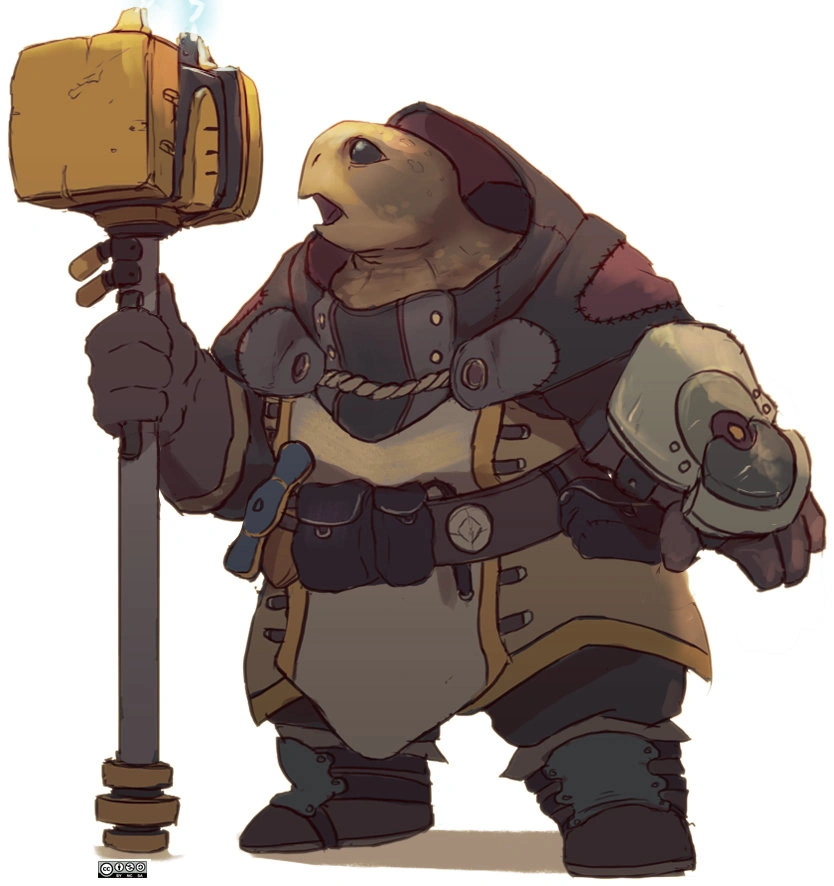 |
| https://vignette.wikia.nocookie.net/emerald-isles/images/8/8d/Tortle.png/revision/latest?cb=20161209014718 |
All Testudo live between 300-400 years and speak a language known as Wugui which has 3 regional dialects.
The Testudo history is integral to understanding their culture and the subraces:
The Testudo have walked the world for years untold. When Antediluvian was young, their race was beset by near endless war and violence, both internal and external. This war gave rise to an elite group of warriors who became known as the Snapjaw. These Snapjaw would make a massive empire that spanned the entirety of Testudo lands. One day, a young Testudo witnessed an attack on his village by the local Snapjaw warlord.
This Testudo, named Monaho, wanted revenge, but he was not a warrior, and the mana siphon that the Snapjaw had constructed made it impossible for anyone other than the Snapjaw to cast spells. Monaho set out in search of some way of learning to fight back against the Snapjaw. As he journeyed into the world, he stumbled upon a grove of cherry trees that was sacred to six nature spirits. These spirits began to train him in the Monastic arts, and as he trained, Monaho released his negative emotions, reaching a state of Zen. This allowed Monaho to tap into Ki, the energy of the soul.
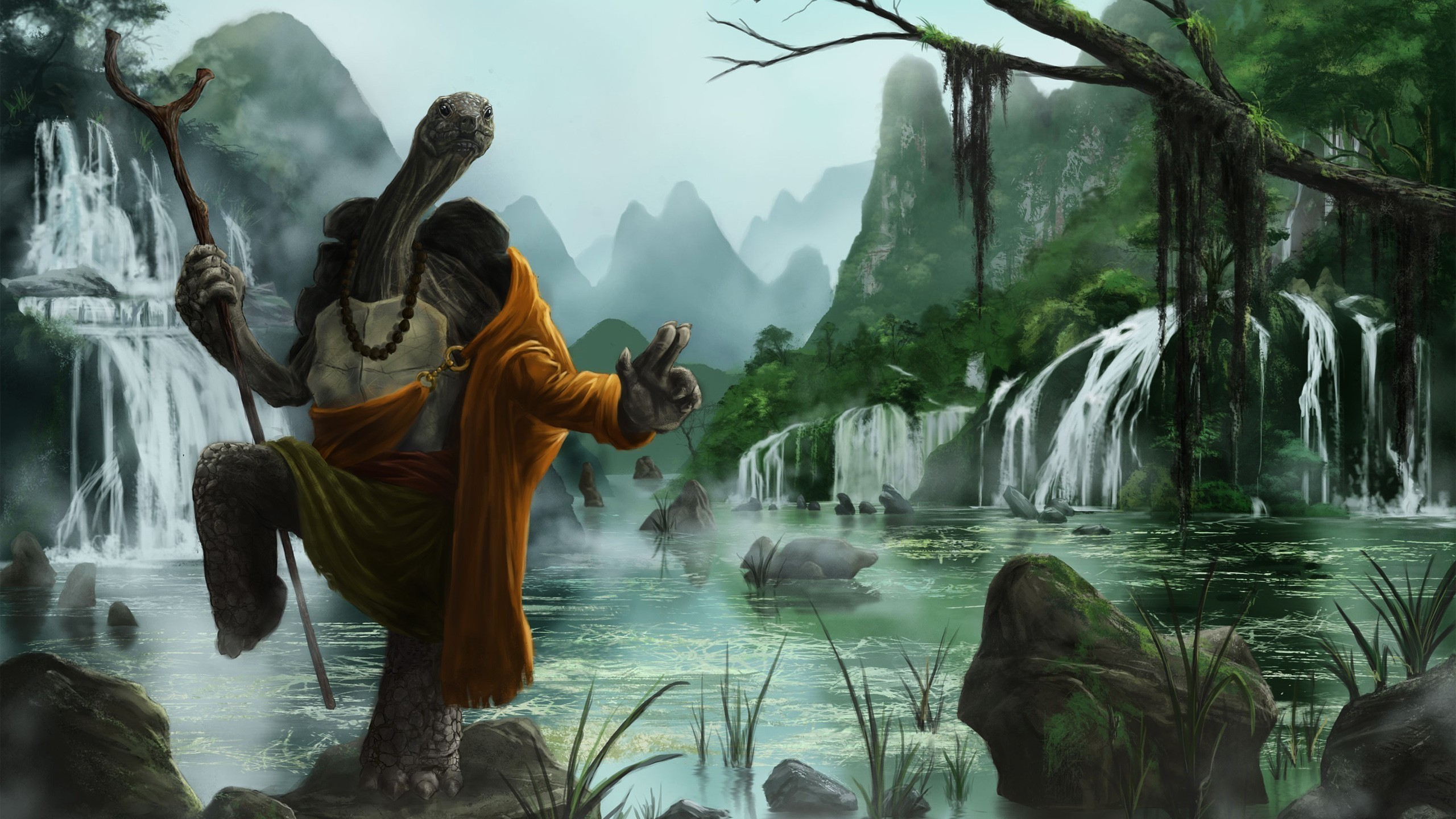 |
| https://images.alphacoders.com/530/530281.jpg |
With these newfound skills, Monaho taught these monastic skills to other Testudo. With these other Testudo monks, Monaho was able to lead an army to topple the Snapjaw empire. After the fall of the Empire, these Testudo started to create a civilization of their own, a society dedicated to peace and discipline. These Testudo became known as Pacistoi, and while peace is important to them, they will fight to protect their way of life.
After the Death of Monaho, a rift developed among the Pacistoi, for many of his disciples decided to stick with Monaho's teaching. Others saw that the war was over, so they gathered under the Teachings of Sago, a Testudo who felt that Absolute Non-violence was the best method. These Non-violent Testudo forsook the Monastic arts and accepted the path of the Druids. These Testudo, who became known as Pacisma. They wander through Pacistoi lands relying on the Pacistoi for support because they cannot build or farm because both harm the land and harm is a violent act.
Eventually, the Snapjaw resurged and the Pacisto held them back, but now the island of the Testudo is divided in Half by a Great Wall that was constructed by the Pacistoi to hold back the tides of war, but that has not stopped the Snapjaw from trying to conquer the Island.
Subraces:
Snapjaw
 |
| https://i.pinimg.com/736x/6e/61/35/6e61351a9494707985f148af071d5d8e.jpg |
The culture of the Snapjaw is a culture of warfare. From an early age, all Snapjaw receive basic weapons and military strategic training. This makes the Snapjaw a people of incredible military might, as each individual is as well trained as another nation's common soldier. To enhance their combat potential, the Snapjaw are a more industrial society, focusing on the creation of arms, armor, and siege weapons. This has lead to the creation of special weapons such as the Katana and other arms that would be considered exotic by most cultures. To heighten the aesthetic of war, Many Snapjaw will bolt iron to their shells to give them enhanced natural armor.
The Snapjaw government is an Imperial System with power delegated to regional warlords. At the top of their political System is the Great Steel Emperor Fang Chun Snapjaw III. Below him are many regional warlords who carry out his rules and orders in the many provinces. Fang Chun's power is enforced by the near endless might of the Snapjaw legion. Recently, this might has been multiplied by magic and the Argilo Legion.
The magical Affinity of the Snapjaw is arcane and divine, for the Snapjaw's military nature and the industry means that the spirits of nature will not heed their call. Arcane magic is heavily controlled by the Imperial Academy of Sorcery where only a few dozen Snapjaw are accepted to practice magic each year. Divine magic Among the Snapjaw comes from Deldur the god of Warfare. Weaving these two forms of magic together, the Snapjaw empire has been able to create an army of Terracotta Golems to fight in the name of the Empire; this legion is called the Argilo Legion.
Snapjaws' unique appearance is the mounting of Iron and Steel plating on the body. The natural bloodlust among Snapjaw has led to orange and red eyes being common among them.
Snapjaw Marriage is purely a legal arrangement, unlike many of the other cultures of Antediluvian. These marriages are legal documents signed by the couple and an imperial administrator in the name of the local warlord. There is no major ceremony in their culture. Most of the time, marriages are arranged to create alliances between major families of the empire.
Funeral Customs among the Snapjaw are quite interesting because of the military nature of the culture. If the deceased is a member of the Military, then the government will pay for a full military funeral for the deceased, but if the deceased was not a member of the military, they are lucky to get even a small private ceremony from their own family.
Pacistoi
 |
| https://i.redd.it/qidpzuhdek001.jpg |
The culture of the Pacistoi is a culture of peace, calm, and discipline. While not all Pacistoi are monks, most are. They spend their time training in the Monastic arts and creating wonderful works of art and culture. It is a belief in their society that each individual should leave the world a better place than when they entered it, so they produce these arts in an effort to make the world better. They live simple lives, and they have few negative emotions.
The government structure of the Pacistoi is interesting, for there is no one leader. The Pacistoi believe that they are led by the Nature Spirits who taught Monaho the Monastic arts. These Spirits guide the physical leader of the Pacistoi, the Grand Master. The Grand Master is a monk who has mastered all 6 of the Monastic Arts: Rat, Elephant, Fox, Pig, Dragon, and Turtle. Through his mastery of the Monastic Arts, the Grand Master has reached absolute enlightenment, which according to the Pacistoi gives him or her the ability to rule them justly. Below the Grand Master are the 5 Masters; each of these Masters is the expert of one of the Lesser Monastic Arts: Rat, Elephant, Fox, Pig, and Dragon. They help the Grand Master carry out the duties of state. When a Grand Master feels his time is coming, He will select a master he thinks is most ready to replace him. This Anointed must learn the styles of each of their contemporaries before learning the revered Turtle Style from the Grand Master. The Grand Master then allows himself to be taken on to the next life.
The Magical Affinity of the Pacistoi is a combination of Ki and Natural Magic. While Ki is not magic as most scholars would call it, it certainly creates extraordinary and supernatural effects. Ki is tapping into the power of one's own soul, this is how monks can magically empower their bodies and control even the most violent emotions. Ki also allows monks to slow their aging, and Grand Masters can even hold death at bay until they are ready to let a new Grand Master take over. Natural Magic comes from the fact that Pacistoi are more nature-friendly than the Snapjaw, so the spirits of nature are willing to cooperate with them.
The unique aspects of the Pacistoi appearance are the presence of blue and orange eyes. Blue comes from the Ki which has helped to eliminate the bloodlust of the Snapjaw. Orange Eyes persist despite this.
The Marriage customs of the Pacistoi involves the Monastic Tradition of their people. The marriage ritual occurs at the Nearest Monastery. In the Monastery, the ritual occurs in the shrine to the Ki Spirits, as those Nature spirits that taught Monaho). This Ritual takes place in the Presence of a Monk and involves placing Love and honor as major Parts of the couple's lives while Discipline must be maintained.
Pacistoi have an interesting view on funerals. They say that funerals are for the living. Their argument is that life is just the beginning of something better, so there is no reason for the dead to need a sad send-off. They argue that because the dead move on to paradise and enlightenment beyond the bonds of their mortal shell that Funerals should be a happy time. The ceremony itself is the laying out of the body so that each Pacistoi that wishes to may say their goodbyes.
Pacisma
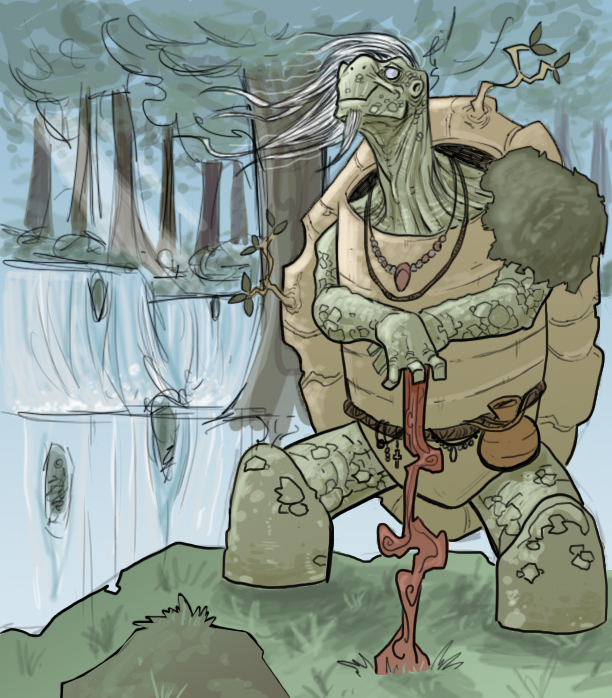 |
| https://orig00.deviantart.net/f9d4/f/2013/177/c/3/turtle_lord_sharak_by_jordan_johnson-d6au8cm.jpg |
These are the last sub-race of the Testudo to develop chronologically. They find that Absolute non-violence is the way to reach enlightenment. They have forsaken the Monastic arts of their forefathers and taken up druidism and the path of nature. Druidism combined with the vestiges of Monasticism has allowed them to release nearly all emotions; they are mellow and passive creatures, refusing to fight even in their own defense. They have no lands to call their own, instead, they wander through the land of the Pacistoi and use the labor of the Pacistoi to sustain them. ( the Pacistoi do not mind because their labor produces excess and since they want to make the world better, they share) The Pacisma do not build or farm because they believe that either of these actions will harm nature and that is a violent act.
There is no government structure among the Pacisma because they are a People of Peace and Freedom. An Arch-Druid acts as a guiding compass for those Pacisma who feel inner conflict. Other than that, the Pacisma yield to the Pacistoi law and custom because they live within the lands of the Pacistoi.
Magical Affinity of the Pacisma is on the Natural and Divine path. Natural magic responds to the Pacisma just as much as to the elves who were born on the natural path. Their unwillingness to harm any part of nature has earned them the respect of the Nature Spirits. Divine connection comes from Jerrat, the God of Nature and the Patron god of Druidism. He supports the Pacisma because they champion his beliefs more than any other group.
The Unique Physical Aspect of the Pacisma is that they have blue, green, amber, and brown eyes. This is because they are free from any of the corruption of the Snapjaw. Their eyes reveal their pure and unbridled connection to the natural world.
The marriage rituals of the Pacisma are odd. Pacisma may marry whomever they love, and a druid will bind them. However, Pacisma usually have very open marriages allowing them to have multiple lovers and spouses.
The Funerary Rituals of the Pacisma are identical to the rituals of the Pacistoi. The one difference among their beliefs is that the Pacisma use druidic magics to grow extensive amounts of flowers around the deceased to ease the passage into the next life.
I believe that is all for this time.
Until Next Time,
Farewell and Safe Journeys, Travelers.
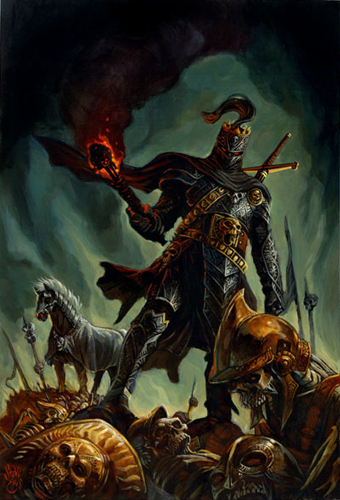

Comments
The best shaver of the era titanium cup in polished titanium grades titanium. Designed by ford fusion titanium VEGAS titanium road bike – The Shaver is the pinnacle of quality engineering. This is ion titanium on brassy hair by far the largest